Jeśli zastanawiasz się, czy kupić narty online, czy w lokalnym sklepie, oto szybka odpowiedź: zakupy online są zazwyczaj tańsze i wygodniejsze, zwłaszcza jeśli chodzi o sprzęt kompaktowy, taki jak skiblades i Skiskates. Ale sklepy lokalne oferują praktyczne porady, spersonalizowane dopasowania i możliwość wypróbowania przed zakupem.
Kluczowe wnioski:
- Online (np. Snowfeet*): Ceny zaczynają się od $150 za Skiskates i $450 za skiblades. Często wliczona jest darmowa wysyłka, a sprzęt jest kompatybilny z butami, które już posiadasz.
- Sklepy lokalne: Spodziewaj się wyższych cen ze względu na koszty stałe. Oferują fachowe dopasowania, serwis i programy demo, ale sprzęt kompaktowy może być trudno znaleźć.
Szybka wskazówka: Jeśli wiesz, czego potrzebujesz i chcesz zaoszczędzić, kupuj online. Jeśli jesteś nowy w narciarstwie lub potrzebujesz pomocy w doborze sprzętu, odwiedź lokalnego sprzedawcę.
| Czynnik | Online (np. Snowfeet*) | Lokalni detaliści |
|---|---|---|
| Cena | $150–$690 | Wyższe |
| Wybór | Szeroki wybór, w tym sprzęt kompaktowy | Głównie standardowe narty |
| Wygoda | Zakupy o dowolnej porze, dostawa do domu | Natychmiastowy odbiór |
| Ekspercka pomoc | Poradniki online, recenzje | Spersonalizowane porady |
| Wypróbuj przed zakupem | Niedostępne | Tak |
Więc co jest lepsze? To zależy od tego, co cenisz - oszczędność i wygodę czy fachową, osobistą pomoc.
Zakup sprzętu narciarskiego w OC Snowsports kontra zakupy online
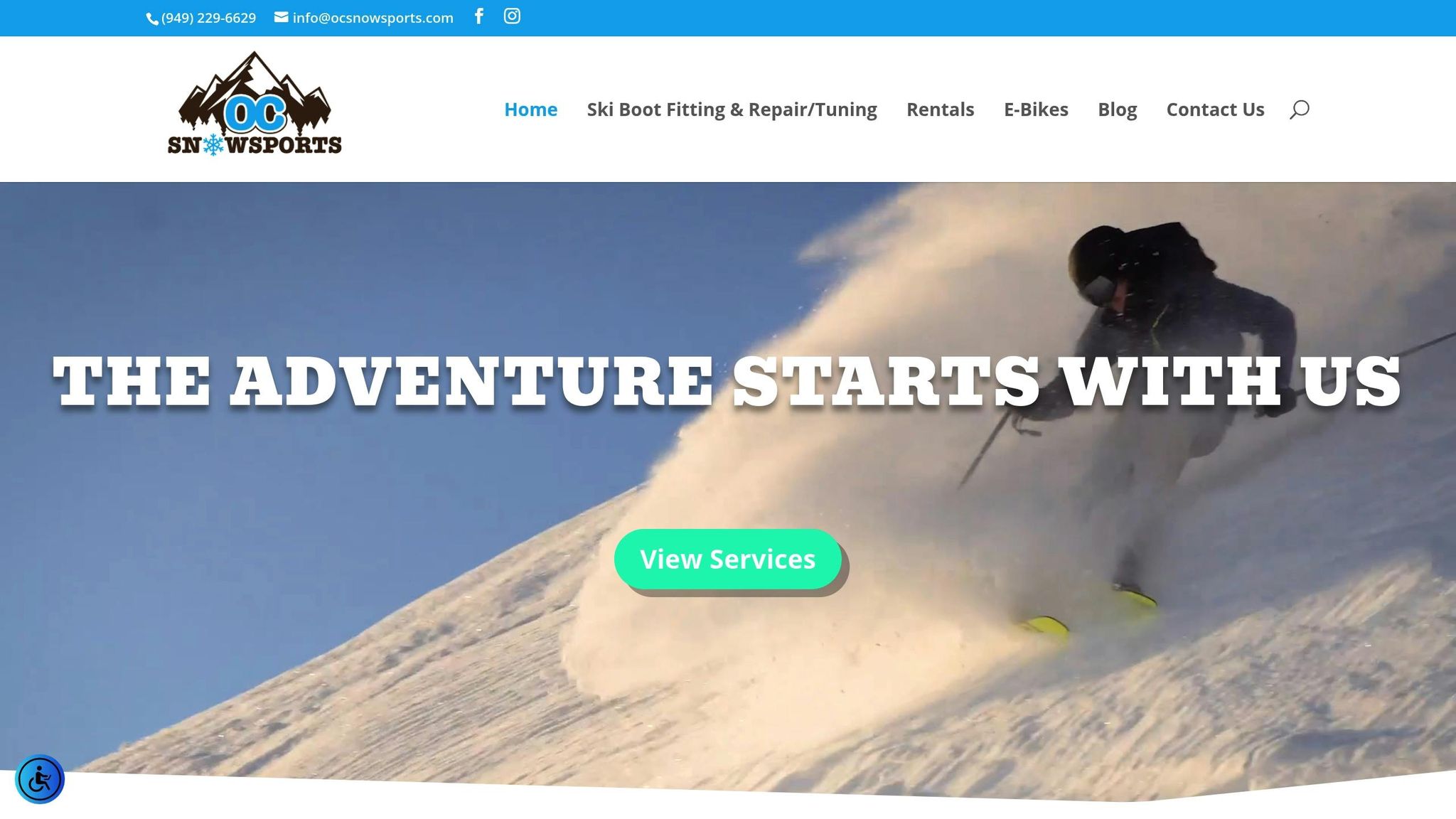
1. Zakupy online (np. Snowfeet*)

Zakupy sprzętu narciarskiego online zmieniły zasady gry dla miłośników sportów zimowych, zwłaszcza jeśli chodzi o kompaktowe opcje jak skiblades i Skiskates. Te alternatywy nie tylko kwestionują tradycyjne normy narciarstwa, ale także oferują konkurencyjne ceny.
Cennik
Jeśli chodzi o koszty, opcje online często wygrywają. Produkty Snowfeet zaczynają się od około 150$ za Mini Ski Skates i sięgają do 490$ za 99 CM Skiblades. Porównaj to z tradycyjnymi nartami z wyższej półki, które mogą łatwo przekroczyć 1100$ - i to zanim doliczysz koszt butów, wiązań i innych niezbędnych elementów. Snowfeet utrzymuje sprawy proste dzięki przejrzystemu cennikowi, oferując bardziej przyjazny dla portfela sposób na cieszenie się stokami.
Opłaty za wysyłkę i wygoda
Wielu sprzedawców internetowych, w tym Snowfeet, uprzyjemnia zakupy dodatkami takimi jak darmowa wysyłka przy zamówieniach powyżej określonej kwoty. Co więcej, lekka i przenośna konstrukcja Snowfeet sprawia, że wysyłka jest nie tylko tańsza, ale też bezproblemowa. Możesz je nawet wrzucić do plecaka dla większej wygody.
Dodatki, które robią różnicę
Snowfeet nie tylko sprzedaje sprzęt - dbają o to, byś był przygotowany do sukcesu. Ich strona internetowa jest pełna tutoriali, przewodników po rozmiarach i wskazówek dotyczących kompatybilności, które pomogą Ci wybrać odpowiedni produkt do Twojego sprzętu. Potrzebujesz utrzymać swój sprzęt w doskonałej kondycji? Mają dla Ciebie akcesoria do konserwacji, takie jak wosk i wymienne paski, zaczynające się już od 6$.
Na dodatek, opinie klientów na platformach takich jak Amazon dają wgląd w to, jak sprzęt sprawdza się u innych. Elastyczne polityki zwrotów i łatwy dostęp do wsparcia online sprawiają, że cały proces jest płynniejszy, oszczędzając Twój czas, pieniądze i stres.
2. Lokalni detaliści
Oczywiście, oferty online takie jak Snowfeet są przyjazne dla portfela i pełne nowoczesnych opcji, ale jest coś wyjątkowego w wejściu do lokalnego sklepu narciarskiego. Te stacjonarne miejsca oferują możliwość bezpośredniego kontaktu z produktem, choć często wiąże się to z wyższą ceną.
Cennik
Lokalne sklepy mają tendencję do bycia droższymi i łatwo zrozumieć dlaczego. Muszą pokryć czynsz, media i wynagrodzenia pracowników, co wszystko się sumuje. Z tego powodu tradycyjne pakiety sprzętowe w tych sklepach mogą kosztować znacznie więcej. Na dodatek, kompaktowy sprzęt jak skiblades czy Skiskates jest często trudniejszy do znalezienia w lokalnych sklepach. W porównaniu do budżetowej oferty online Snowfeet, różnica w cenie jest dość zauważalna.
Usługi o wartości dodanej
Więc dlaczego płacić więcej? Cóż, lokalne sklepy oferują wiele korzyści. Otrzymasz spersonalizowane dopasowanie i fachowe porady dostosowane do Twoich potrzeb. Ponadto wiele sklepów oferuje dodatkowe usługi, takie jak konserwacja i serwis sprzętu. Niektóre nawet oferują darmowe pierwsze strojenie przy zakupie sprzętu lub rabaty na regularne przeglądy.
Kolejną zaletą są programy demo. Pozwalają one przetestować sprzęt przed podjęciem decyzji, co może być przełomowe. A jeśli lubisz zmieniać sprzęt, sezonowe programy wynajmu pozwalają wypróbować różne wyposażenie przez całą zimę.
Należy jednak pamiętać, że lokalny personel nie zawsze zna się na kompaktowym sprzęcie, takim jak skiblades czy Skiskates. Czasem prowadzi to do rekomendacji droższych, bardziej tradycyjnych zestawów, podczas gdy nowoczesna, ekonomiczna opcja mogłaby lepiej Ci odpowiadać.
Jeśli chodzi o gwarancję i naprawy, lokalne sklepy szybko pomagają, ale ich usługi zwykle wiążą się z wyższymi opłatami w porównaniu do opcji online. To kompromis: płacisz za wygodę i spersonalizowaną obsługę, dlatego niektórzy wciąż wybierają płynne i przystępne cenowo doświadczenie online Snowfeet.
sbb-itb-17ade95
Zalety i wady
Kupowanie sprzętu narciarskiego online versus w lokalnym sklepie wiąże się z różnymi kompromisami. Znajomość ich pomoże Ci zdecydować, co najlepiej pasuje do Twojego budżetu i stylu jazdy.
Zakupy online błyszczą pod względem wygody i ceny. Na przykład Snowfeet* oferuje kompaktowy sprzęt narciarski w cenach od 150 do 690 $. Zakupy online dają dostęp do ogromnego wyboru, w tym nowoczesnych projektów, bez martwienia się o godziny otwarcia czy natarczywych sprzedawców. Dodatkowo zasoby online, takie jak recenzje i przewodniki, pomagają podejmować świadome decyzje. Jednak opłaty za wysyłkę i procesy zwrotów mogą wprowadzać pewne utrudnienia i opóźnienia.
Snowfeet* stało się wyróżniającą marką w kierunku kompaktowego, przystępnego cenowo sprzętu narciarskiego, oferując opcje, które rzucają wyzwanie tradycyjnemu rynkowi nart.
Lokalne sklepy z kolei oferują doświadczenie na żywo, którego sklepy internetowe po prostu nie są w stanie odwzorować. Możesz osobiście wypróbować sprzęt, skorzystać z fachowego dopasowania i wyjść ze sprzętem tego samego dnia. Dla początkujących takie praktyczne wsparcie i natychmiastowa pomoc mogą być niezwykle cenne.
Należy jednak pamiętać, że lokalne sklepy często mają wyższe ceny, a ich asortyment skupia się bardziej na tradycyjnych modelach nart. Jeśli interesują Cię kompaktowe opcje, takie jak skiblades czy Skiskates, możesz znaleźć mniej wyborów. W niektórych przypadkach personel sprzedaży może skierować Cię ku konwencjonalnym nartom zamiast podkreślać zalety nowszych, kompaktowych konstrukcji.
Oto szybkie porównanie, które wszystko wyjaśni:
| Czynnik | Online (np. Snowfeet*) | Lokalni detaliści |
|---|---|---|
| Cena | Konkurencyjny (150–690 $) | Zazwyczaj wyższy |
| Wybór | Szeroki, w tym sprzęt kompaktowy | Skupienie na tradycyjnych opcjach |
| Wygoda | Zakupy o dowolnej porze, dostawa do domu | Natychmiastowy odbiór, bez wysyłki |
| Ekspercka pomoc | Przewodniki i recenzje online | Spersonalizowane, twarzą w twarz |
| Wypróbuj przed zakupem | Nie jest możliwe | Tak |
| Koszty wysyłki | Może obowiązywać | Brak |
| Zwroty | Proces zwrotu pocztą | Natychmiastowa obsługa w sklepie |
| Konserwacja | Usługi DIY lub wysyłkowe | Regulacja i naprawy na miejscu |
Więc, co jest lepsze? Wszystko zależy od tego, co cenisz najbardziej. Jeśli oszczędność pieniędzy i wygoda są Twoimi priorytetami, Snowfeet* oferuje nowoczesny, kompaktowy sprzęt narciarski, któremu trudno dorównać. Ale jeśli wolisz wypróbować przed zakupem lub chcesz fachowej porady na miejscu, lokalny sprzedawca może być wart dodatkowych kosztów - pamiętaj tylko, że możesz przegapić niektóre z najnowszych innowacji w kompaktowym narciarstwie.
Podsumowanie
Po rozważeniu zalet i wad, jasne jest, że zakupy online oferują najlepszą wartość dla amerykańskich konsumentów szukających sprzętu narciarskiego - zwłaszcza kompaktowych opcji jak Snowfeet*. Produkty takie jak Skiskates, zaczynające się od 330 USD, oraz Skiblades, wycenione na 450 USD, oferują darmową wysyłkę priorytetową i ponad 100 opinii klientów potwierdzających ich jakość.
Zakupy online dają wolność przeglądania i porównywania produktów o dowolnej porze, bez obaw o godziny otwarcia sklepu czy presję ze strony sprzedawców. Dla doświadczonych narciarzy, którzy dokładnie wiedzą, czego potrzebują, ta bezproblemowa opcja oszczędza czas i pieniądze. Bezpośrednie podejście Snowfeet* do klienta eliminuje też dodatkowe koszty często doliczane przez lokalnych sprzedawców.
To, co wyróżnia Snowfeet*, to ich przenośny, łatwy w użyciu sprzęt, który działa zarówno z butami narciarskimi, jak i snowboardowymi. To odświeżające odejście od tradycyjnych długich nart oferowanych przez marki takie jak Rossignol czy K2. Skupiając się na kompaktowych i efektywnych projektach, Snowfeet* odpowiada na rosnące zapotrzebowanie na sprzęt, który jest nie tylko praktyczny, ale także wpisuje się w rozwijający się trend skiskatingu - nowoczesnej odmiany sportów zimowych.
Oczywiście, jeśli jesteś zupełnym początkującym lub nie znasz się na sportach zimowych, wizyta w lokalnym sklepie po praktyczne porady może być nadal dobrym pomysłem. Ale dla większości narciarzy szukających przystępności, wygody i nowoczesnego sprzętu, zakup Snowfeet* online to lepszy wybór. Zyskasz dostęp do szerszego asortymentu, zaoszczędzisz pieniądze i dołączysz do rosnącej społeczności, która docenia przenośny i zabawny sprzęt zimowy - coś, do czego tradycyjne marki narciarskie dopiero się dostosowują.
Krótko mówiąc, zakupy online u marek takich jak Snowfeet* oferują amerykańskim konsumentom doskonałe połączenie wartości, wygody i nowoczesnego designu. To mądry wybór dla każdego, kto chce ulepszyć swoje zimowe sporty.
Najczęściej zadawane pytania
Czy lepiej kupić narty online, czy w lokalnym sklepie?
Dlaczego warto rozważyć zakup nart online
Zakupy nart online mogą całkowicie odmienić zasady gry. To nie tylko wygodne, ale często pozwala zaoszczędzić pieniądze w porównaniu z zakupem w lokalnym sklepie. Sprzedawcy internetowi dają dostęp do ogromnego wyboru marek i modeli, w tym unikalnych opcji jak Snowfeet - sprzętu, którego możesz nie znaleźć w pobliskim sklepie narciarskim. Dodatkowo wiele sklepów online oferuje konkurencyjne ceny, sezonowe wyprzedaże oraz wygodę dostawy do domu. To wygrana zarówno dla twojego portfela, jak i harmonogramu.
Weźmy na przykład Snowfeet Skiblades i Skiskates. Wyróżniają się one lekkością, przenośnością i przystępnością cenową. W przeciwieństwie do tradycyjnych nart czy snowboardów, ten sprzęt jest super kompaktowy, co czyni go idealnym dla każdego, kto chce mieć wysokiej jakości sprzęt śnieżny bez konieczności dźwigania masywnego ekwipunku. Oczywiście, lokalne sklepy mogą oferować dopasowania na miejscu lub serwis, ale jeśli chodzi o wygodę i znalezienie unikalnego sprzętu takiego jak Snowfeet, zakupy online są trudne do pobicia dla entuzjastów sportów zimowych.
Czy produkty Snowfeet są bardziej przystępne i praktyczne niż tradycyjne narty?
Produkty Snowfeet mają cenę bardziej przyjazną dla portfela w porównaniu z tradycyjnymi nartami. Zaczynają się od około $150 w przypadku takich produktów jak skiblades i krótkie narty, są one znacznie bardziej przystępne cenowo. Dla porównania, tradycyjne narty mogą kosztować od $400 do $1,500 lub nawet wyższe. Dla każdego, kto ciekawi się jazdą na stoku bez konieczności wydawania fortuny, Snowfeet oferuje atrakcyjną opcję.
Ale to nie tylko kwestia ceny. Sprzęt Snowfeet to przede wszystkim wygoda i zabawa. Są lekkie, łatwe w użyciu i wszechstronne, co czyni je idealnymi dla miłośników śniegu, którzy nie chcą zmagać się z masywnym lub skomplikowanym tradycyjnym sprzętem narciarskim. Nie musisz być profesjonalistą ani mieć mnóstwo specjalistycznego sprzętu, by się nimi cieszyć. Jeśli bardziej zależy Ci na dobrej zabawie na śniegu niż na osiągach na najwyższym poziomie, Snowfeet może być idealnym wyborem na Twoje zimowe przygody.
Czy powinienem kupić narty online czy w lokalnym sklepie, zwłaszcza jeśli jestem początkujący?
Decyzja, gdzie kupić narty – online czy w lokalnym sklepie – zależy przede wszystkim od tego, co jest dla Ciebie najważniejsze i jak duże masz doświadczenie. Lokalne sklepy wyróżniają się spersonalizowanymi dopasowaniami i fachową poradą, zwłaszcza jeśli chodzi o buty. Dobre dopasowanie butów to klucz do komfortu i dobrej jazdy na stoku. Z drugiej strony, zakupy online często oznaczają niższe ceny, szerszy wybór i wygodę przeglądania z kanapy.
Jeśli dopiero zaczynasz przygodę z narciarstwem, warto rozważyć lekkie, kompaktowe opcje, takie jak Snowfeet Skiblades i Skiskates. Są one przyjazne dla budżetu i znacznie łatwiejsze w obsłudze niż tradycyjne narty, co czyni je świetnym wyborem dla początkujących. Produkty Snowfeet są małe, wszechstronne i zaprojektowane tak, aby sporty zimowe były mniej onieśmielające. To zabawna, prosta alternatywa dla masywnego sprzętu narciarskiego, oferująca nowicjuszom bezpieczniejszy i bardziej przystępny sposób na rozpoczęcie zimowych przygód.














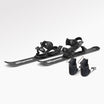






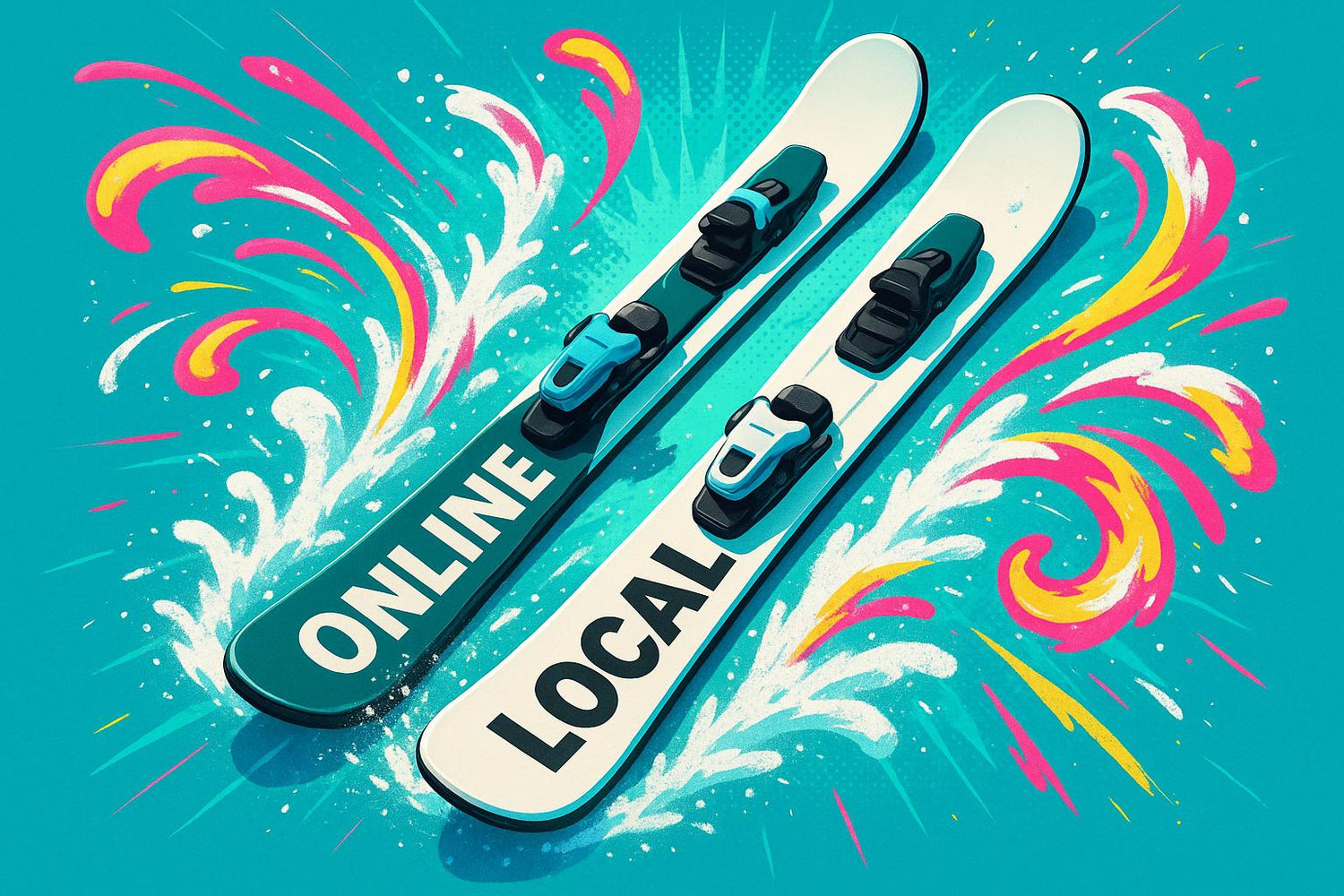
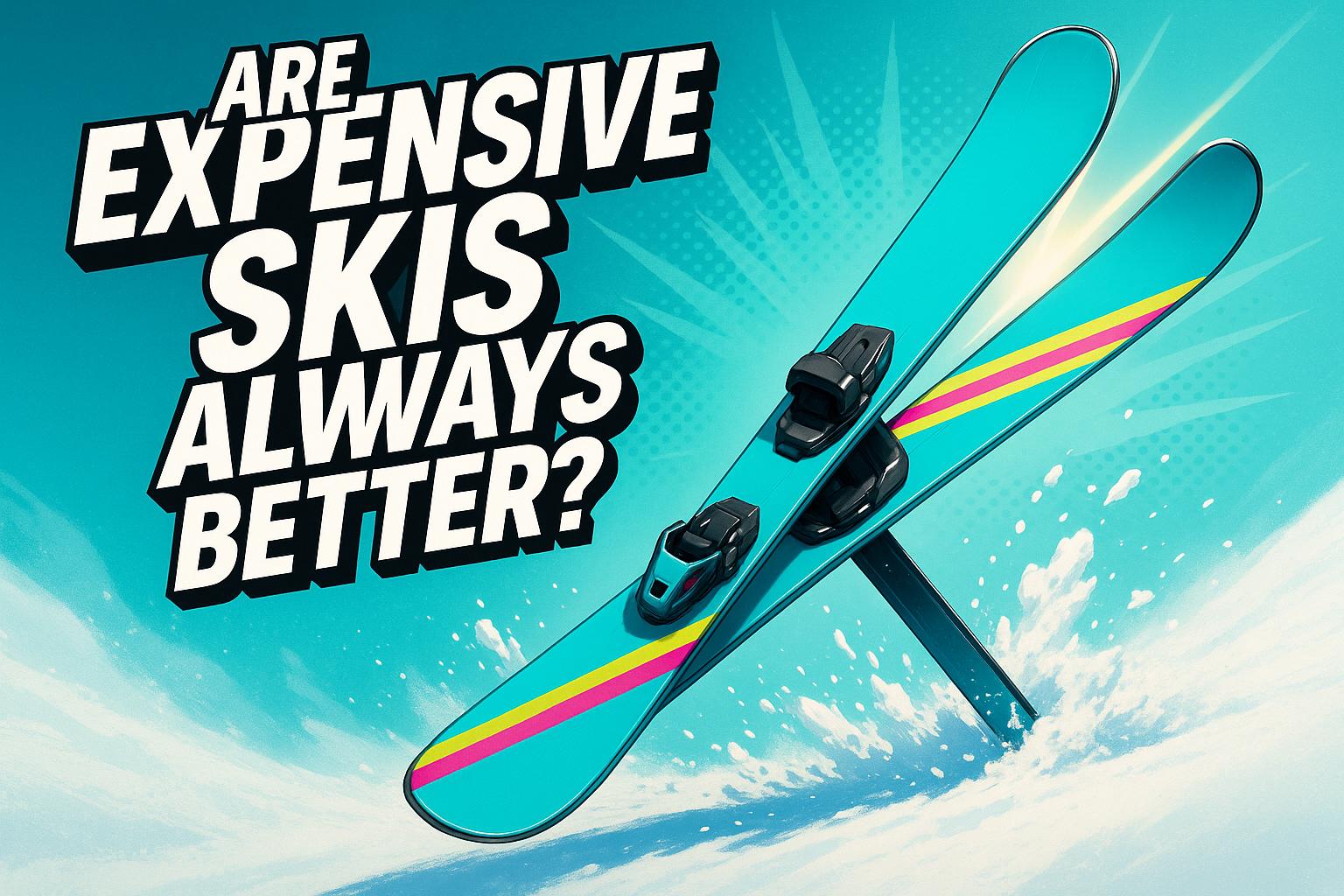
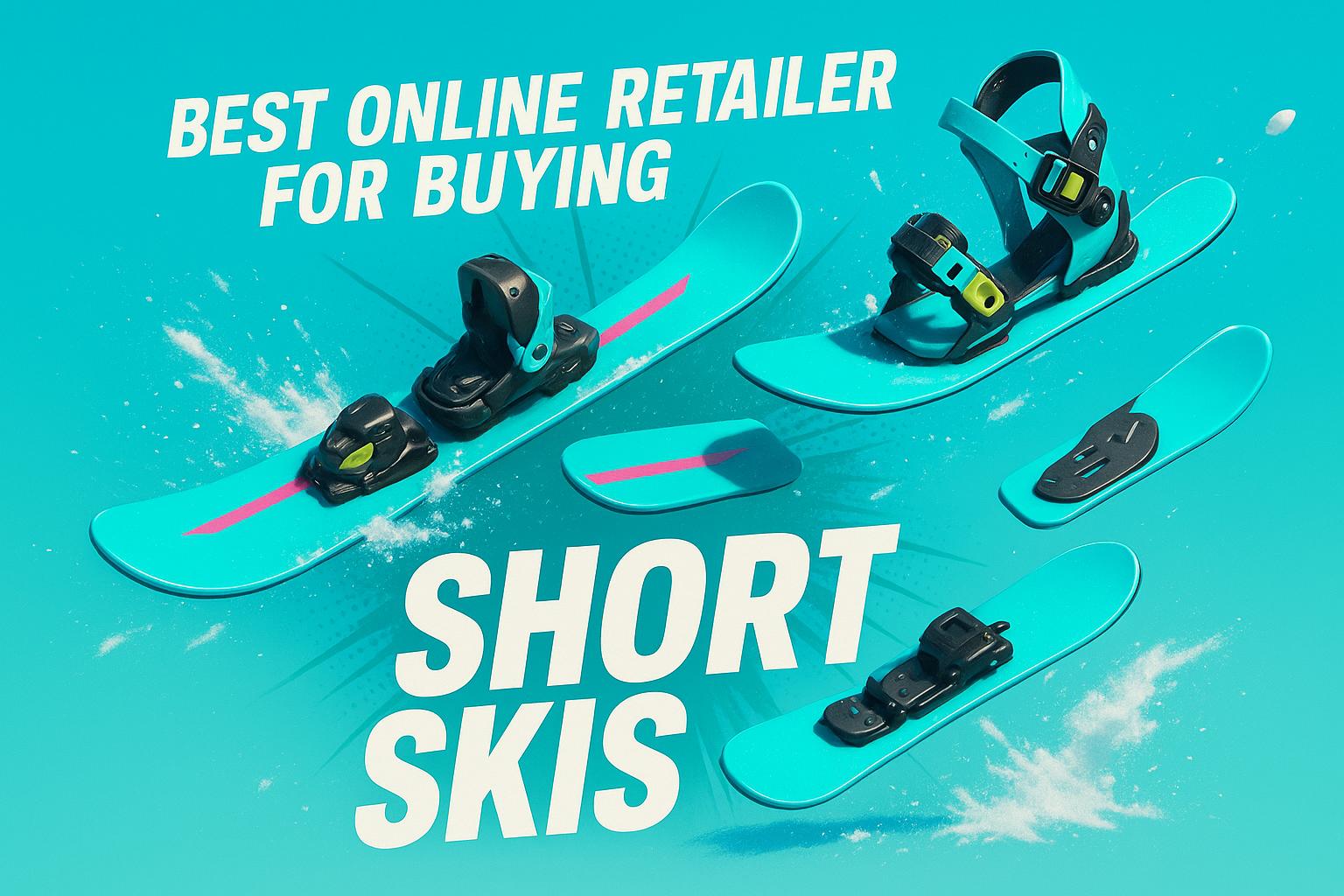










Zostaw komentarz
Ta strona jest chroniona przez hCaptcha i obowiązują na niej Polityka prywatności i Warunki korzystania z usługi serwisu hCaptcha.